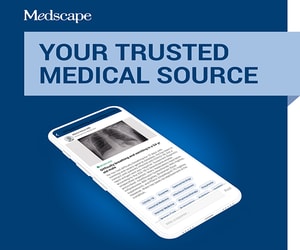December 10, 2010 — Researchers demonstrated a strong link between exposure to secondhand smoke (SHS) and invasive meningococcal disease in children, according to a new systematic review of studies and meta-analysis by the Harvard School of Public Health.
The methodology used and the findings were published online December 7 in PLoS Medicine.
Decreasing children's exposure to passive smoke — for instance, by discouraging parents from lighting up at home — could greatly reduce illness and death from invasive bacterial disease, the authors suggest. Such initiatives would be particularly beneficial in developing countries with low invasive bacterial disease vaccination rates.
Invasive bacterial disease is a significant cause of pediatric mortality in both developing and developed nations, claiming as many children's lives as HIV/AIDS and malaria combined. In most pediatric invasive bacterial disease cases, the suspected organisms are Streptococcus pneumoniae, Haemophilus influenzae type B (Hib), and Neisseria meningitidis.
Pediatric exposure to SHS is significantly linked to invasive meningococcal disease. However, there is only suggestive evidence to connect SHS exposure to invasive pneumococcal and Hib diseases. These findings also reveal that the exposure is associated with an increased carriage of N meningitidis and S pneumoniae.
To conduct the meta-analysis, 2 independent reviewers searched Medline, EMBASE, and selected other databases; they then screened articles for inclusion and exclusion criteria. They identified 30 case-control studies and 12 cross-sectional studies, mainly conducted in high-income nations with good vaccination policies. Then they compared the prevalence of invasive bacterial disease over time in children exposed to SHS with its incidence in children without SHS exposure.
Researchers calculated a ''summary odds ratio'' (OR). Compared with children who were not exposed to SHS, those exposed to SHS were twice as likely to develop invasive meningococcal disease (summary OR for SHS exposure, 2.02; 95% confidence interval [CI], 1.52 - 2.69). Summary ORs for invasive pneumococcal disease and Hib diseases were 1.21 (95% CI, 0.69 - 2.14) and 1.22 (95% CI, 0.93 - 1.62), respectively.
The association between SHS exposure and invasive meningococcal and Hib diseases was consistent regardless of outcome definitions, age groups, study designs, and publication year. The effects tended to be stronger in the youngest children — those younger than 6 years — who are more vulnerable.
Although current analyses of global invasive meningococcal disease burden do not exist, regional estimates of occurrence extend from 0.3 to 4 cases per 100,000 in North America to 1000 cases per 100,000 in the ''meningitis belt'' in sub-Saharan Africa.
"Given the persistent or growing SHS exposure in developing countries, especially in Asia, where [invasive bacterial disease] poses a major health risk, it is essential to delineate the role of exposure to SHS in the epidemiology of [invasive bacterial disease]," the authors write.
The authors acknowledge limitations in their review and meta-analysis. Namely, the small number of identified studies, lack of research from developing countries with rising SHS exposure and high invasive bacterial disease burden, and significant differences between the studies in measuring SHS exposure and diagnosing invasive bacterial disease.
"Because the burden of invasive bacterial disease is highest in developing countries where [SHS] is increasing, there is a need for high-quality studies to confirm these results, and for interventions to reduce exposure of children to [SHS]," the authors conclude.
This research was supported by grants from the Bill & Melinda Gates Foundation to the National Institute of Environmental Health Sciences and to the US Fund for the United Nations Children’s Fund for the Child Health Epidemiology Reference Group. The authors have disclosed no relevant financial relationships.
PLoS Med. Published online December 7, 2010.
Medscape Medical News В© 2010 WebMD, LLC
Send comments and news tips to news@medscape.net.
Cite this: Secondhand Smoke Raises Pediatric Risk for Invasive Meningococcal Disease - Medscape - Dec 10, 2010.










Comments